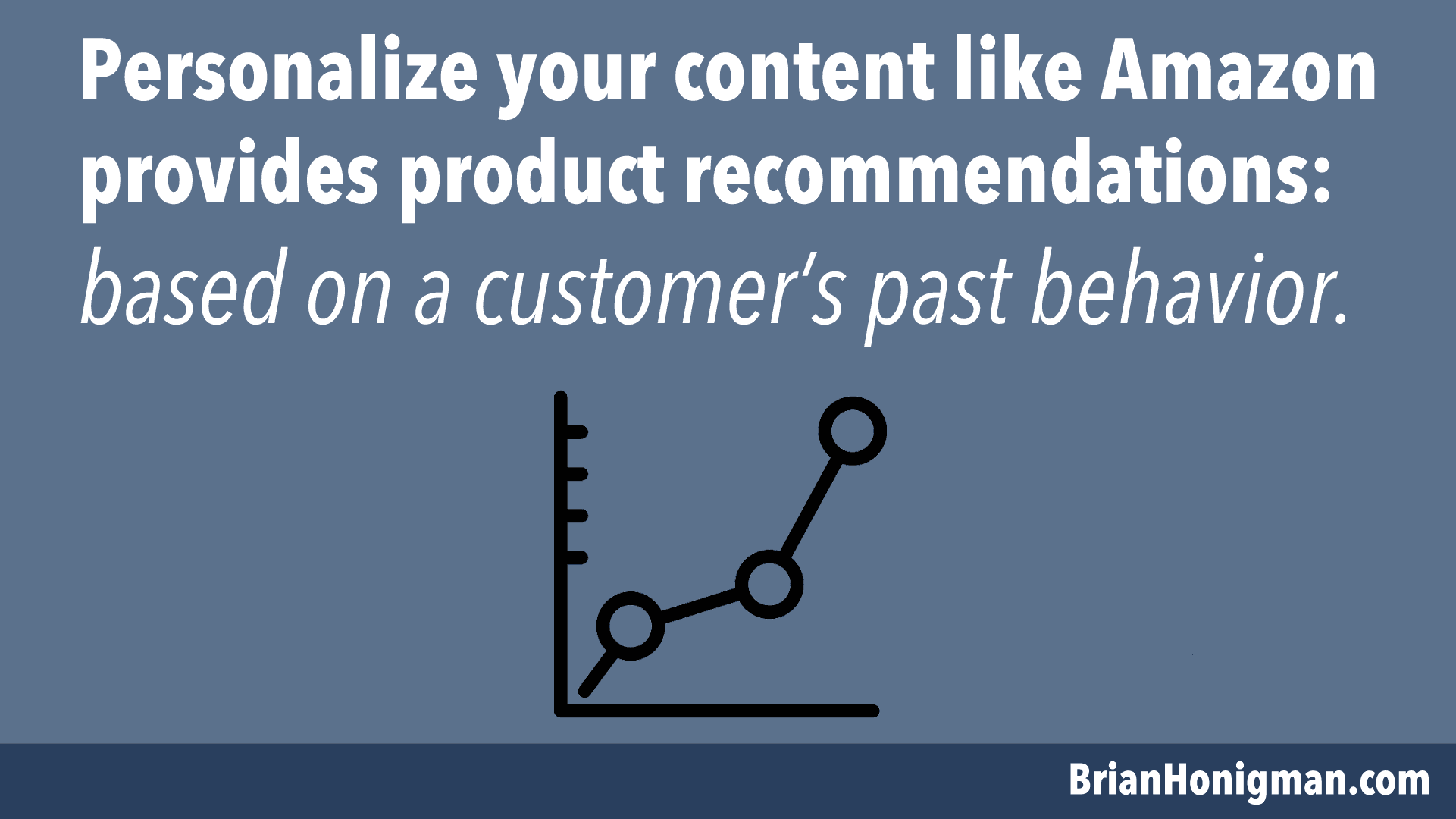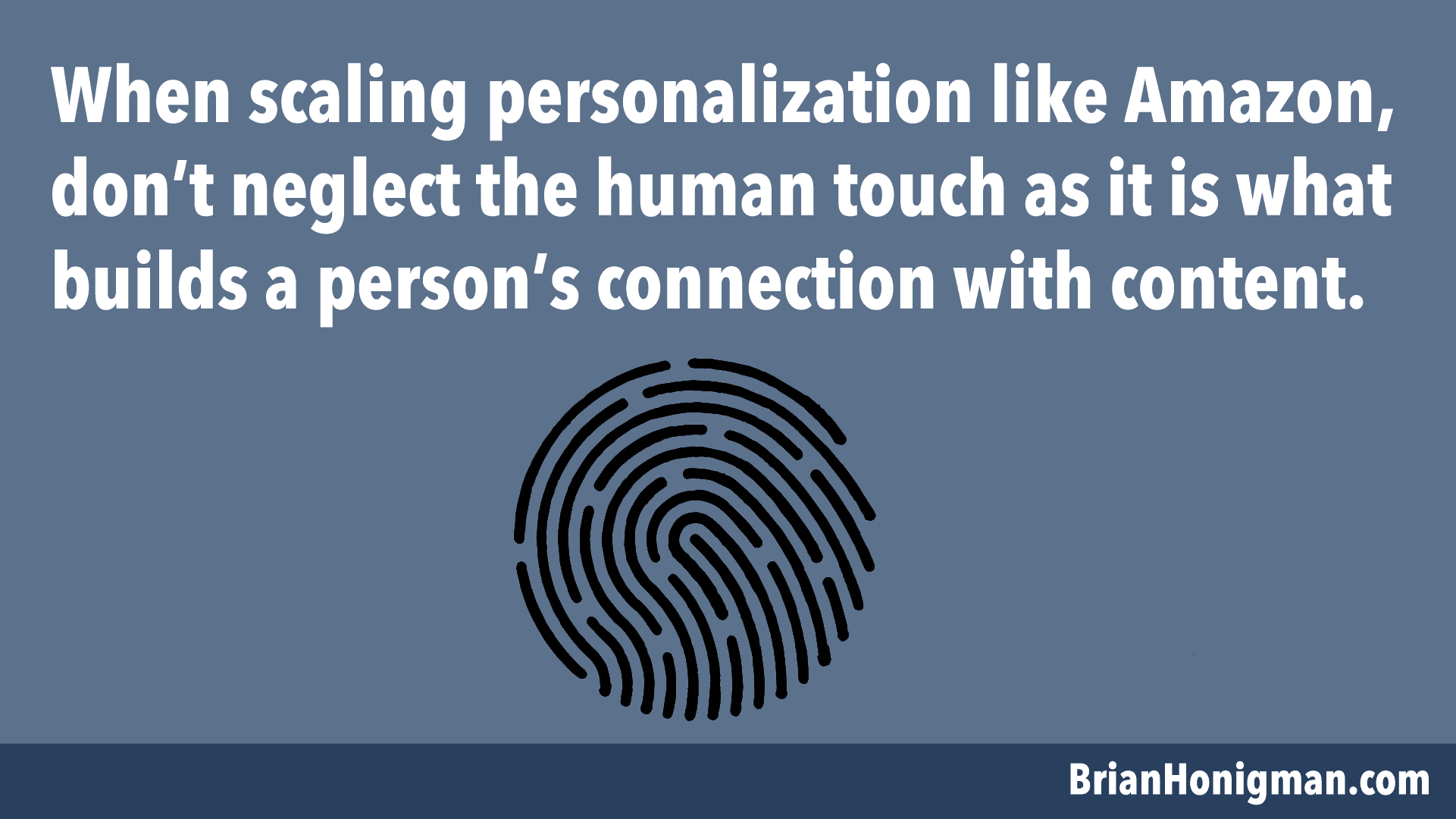
Most content from a business, written or otherwise, sucks because it isn’t personalized. According to eMarketer, 59% of marketers surveyed said they don’t have the bandwidth or resources to personalize their content.
I understand if you’re Walmart and your audience is large and varied, it’s more difficult to create content to suit every type of customer. For the big brands, start small and personalize for your most loyal customer segment first.
For everyone else, there’s no excuse. You’re not Walmart and should have a much more focused group of customer’s you’re trying to reach.
Consumers are experiencing the lack of personalization first hand as 80% of the 400 people surveyed said brands are not familiar, or at best, are only somewhat familiar with their needs.
Knowing your audience is important when creating content in any form. When I say ‘knowing’ I mean understanding what their interests are, the challenges they face, where they spend time online and most of all, what will motivate them to take action.
Content personalization matters because consumers are bombarded with more information daily as the amount of content produced has risen significantly, while attention spans have actually fallen.
A reader, podcast listener or a video viewer is far more likely to engage with content that suits them and their particular needs, especially when they’re given so many options to choose from. Your company’s content has to give them the right information at the right time or it’s just another link in their feed.
To start catering your content to your audience effectively, let’s explore what Amazon does to succeed with personalization.
Review Your Data to Start Personalizing Content
Amazon has become the leader in ecommerce for many reasons, one of which is the company’s ability to personalize the shopping experience to each customer. As a consumer their product recommendations are extremely useful as they seem to know what items you want before you know you want them.
I’d like to challenge you to take this approach and deliver content to your audience that suits their needs, before they even know what they are looking for.
The first step to personalizing content like Amazon is referring to your existing data about your audience.
Amazon is able to personalize the products on their website and across email to consumers based on their past behavior. Whatever an Amazon customer searches for, clicks on or purchases is taken into consideration and informs what products are recommended to that customer next.

Keeping this in mind, refer to all your available data sources on customer activity online and offline to understand the past behavior of your customers.
Refer to Google Analytics, another analytics software, your customer loyalty program, activity on your email list, completed surveys, third party research, focus groups or insights from customer service to organize your existing customer data and make informed decisions about what your customers are interested in, challenged by, where they spend time and what motivates them to take action.
The goal here is to detect any noticeable patterns in customer behavior with your existing content and website to direct what topics you’ll focus on moving forward.
There are obviously many variables that make a content item successful and personal, but without a doubt, getting direction on which topic choices to cover is the most important factor.
Here are some examples of what to look for in your existing customer data to inform topic choice:
-
- The same customer questions or complaints sent to customer service or expressed elsewhere online.
-
- Leading keywords used in search to drive traffic and interaction on your website.
-
- What content and non-content focused pages on your website drives the most traffic and the most conversions.
-
- Identify what your most linked to and most shared content resources are and analyze why they were successful.
- What’s consistently said about your organization on social media, whether it’s positive, negative or neutral.
Personalization Requires a Human Touch
Although much of Amazon’s recommendation engine is automated, some of the process of targeting product recommendations to a person is done by employees, according to Fortune.
The article states that employees use a plethora of tools to target customers based on their purchasing and browsing behavior, but the actual targeting is done by members of the Amazon team.
The technology that runs Amazon wouldn’t be precise without moderation by the company’s staff. The same principle applies to when you’re personalizing your company’s content.

Your team must analyze existing data, apply company goals and think critically about the audience you’re trying to reach in order to make informed decisions about what to focus on in terms of content types, content categories, keyword choices, tone, content structure, industry terminology, calls-to-action, copy choices and who will author your content.
No tool or formalized process can recommend what types of content, keywords and other elements to use in your content marketing, but instead you’ve got to rely on the expertise of your team, paired with available data, to decide which options are the most likely to succeed and are worth testing with your customers.
Serve Content to Customers Before They Ask For It
Similar to how Amazon serves product recommendations to its customers without them having to ask or search for it, deliver relevant content to your audience where they spend time as a part of your overall content marketing mix.
Social advertising is one of the most effective ways today to target the right customer based on their location, devices used, their job title, past shopping behavior, professional industry, age, gender and more.
Depending on your audience, consider an investment in Facebook and LinkedIn advertising to sponsor your content in the feed and deliver it to your intended customer.

For example, if a company specializes in selling moving supplies to companies, then they should personalize their content to the people at an organization that are responsible for any office moves.
Sponsor the content your team has developed on the subject within LinkedIn’s feed by targeting individuals by job title, specifically by ‘office manager’, ‘office administrator’, ‘office assistant’, ‘administrative assistant’ and ‘administrator’.
The goal here is to educate and provide value to your customer with relevant content without making them do the work of finding this information themselves.
Automate Content Personalization When Possible
The technology platform that Amazon has built to run their website is impressive as it supports 480 million products in the U.S. and automatically personalizes a customer’s experience on the site based on their past shopping habits.
This level of technological expertise is not something most businesses will be able to afford to create on their own. However, automated personalization is important as it saves time and resources and can help your organization continue to serve relevant content recommendations.
To solve for this, invest in third-party tools to automate the process of personalizing content when possible. Consider the following elements and tools when looking to automate personalization:
-
- Content recommendations with tools like Contextually or Outbrain
- Geotargeting, contextual behavioral targeting and device targeting with tools like Facebook ads and Google AdWords
- Social sign-in with tools like Gigya or Janrain
- Tagging Specific Personas with tools like MailChimp or Campaign Monitor
- Dynamic CRM systems like HubSpot or Pardot
This isn’t an exhaustive list of tools, but a strong starting point for putting the systems in place to make your content more personalized and therefore, more impactful for your audience.
Lastly, experiment with personalization as much as possible. Not being afraid to experiment and potentially fail is what has led to Amazon’s continuing success as compared to competitors.
How do you give your content that personal touch to help it stand out? Let me know what works for your business in the comments below.


